![]()
There is only Brahman, with Devi (Maha Maya) or Paramesari latent in it
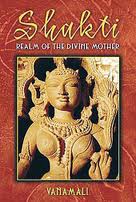
"The Devi Bhagavatam teaches us that the Brahman is the undecaying principle of fullness—the ultimate substratum of everything. It is totally without desire or qualities. Therefore it is not able to create or accomplish any action without the help of its inherent force or Shakti—Maha Maya, the feminine principle, the great goddess—Parameswari. All the gods—Brahma, Vishnu, Shiva, Ganesha, Indra, and so on—can do their respective work only if they are united with Shakti. So Maha Maya can be considered the sole cause of this entire universe of movable and unmovable objects. She is the cause of all causes and manifests as Maha Lakshmi, Maha Saraswati, and Maha Kaali. We should worship her with all adorations. Even the gods worship her in order to do their allotted tasks.”
The book begins with a request by the sages to the narrator, known as Suta, to describe the qualities and glories of Devi. Suta responds,
I bow at the lotus feet of Devi—Bhagavati, who is worshipped by Brahma, Vishnu, and Shiva and who is the sole source of liberation to all. This is the best of all Puranas and contains all the sentiments that a human being can conceive. It is known as the Srimad Devi Bhagavatam. May that highest primal Shakti, who is known as Vidya in the Vedas, who is omniscient, who controls all, and who is skilled in cutting the knot of the world, give me intelligence to describe her glories. I meditate on that Divine Mother who creates this universe, whose nature is both real and unreal, who creates, preserves, and destroys everything in her rajasic, sattvic, and tamasic aspects, and who in the end dissolves everything back into herself and remains alone during the period of universal dissolution.
The Devi Bhagavatam goes on to describe the basic formation of the universe and the forms—human or otherwise—that comprise. It introduces the idea that Brahman, the supreme absolute from which everything emanates, has a dual aspect of male and female, personified as Shakti and Shiva or Prakriti and Purusha. The Devi herself is both Shakti and Prakriti. She is known by various names as Parashakti and Parameswari—the Absolute force as well as the Absolute God. However, as mentioned in the introduction, neither male nor female can exist in isolation. The whole of creation is at first only an idea in the mind of the supreme Brahman. The idea is given a concrete reality and expression in the world by Shakti or Prakrti, the feminine force that underlies and impels creation. But to make a difference between the"force"And the"receptacle of force"Is an error. Prakriti or Parameswari is an inherent tendency of Purusha to express himself in concrete forms and individual beings. However, she has to be set in motion by the will of Purusha and acts according to his force and design. It is only through Shakti or Prakriti that the male aspect is able to express himself in creation. Though the male and female aspect are one in essence, differences are conceived during creation; when everything melts back to its original casual state of pralaya, then there is no distinction between Purusha and Prakriti, Shiva and Shakti, and Brahman. There is neither male nor female. There is only Brahman, and Devi (Maha Maya) or Parameshwari latent in it.
Brahman is the ocean of pure consciousness. It can never be known and it is always one, never two. But when it wants to become conscious of itself, a desire bubbles to the surface of this ocean and this bubble is Prakriti or Maha Devi or Parashakti or Parameswari, which develops itself into this variegated universe in the method described above. Even though Maha Shakti appears outwardly in numerous forms, this creative force is always emanating from the Brahman so it has all the qualifications of the Brahman. When it manifests itself in the human being it is called the atman, which is nothing other than the Brahman. However, when it puts on the clothing and personality of a human being, it is called the jivatman, which is the atman that thinks itself to be a bound and unhappy creature always on the seesaw of sorrow and joy, pleasure and pain, swimming—and sometimes drowning—in the sea of duality. In actuality, its abode is the ocean of pure consciousness, which is also an ocean of bliss.
Many beautiful allegories are given in the Puranas to give us an idea of this interdependence of Purusha and Prakriti. He is the supreme subject and she is the essence of all objects; he is the ocean and she the waves He is the sun and she the light; he is the sky and she the earth. She is all qualities and he the enjoyer of all qualities; she is all activity and he the sole witness of all activity. She is the form of everything in the cosmos and he the thinker of the forms. She is speech and he the meaning. In other words, she is creation and he the creator.
Prakriti and Purusha have no beginning and no end. They exist in everything. Purusha is the universal consciousness that exists in everything; he is the highest self. Prakriti is the energy that is felt in all beings. Both are nirguna or without qualities. No human being can know the essence of their union even by study of the scriptures or the Vedas, for the jivas are all saguna or endowed with the qualities of the three gunas—sattva, rajas, and tamas. How then can we ever know that which is nirguna or beyond all gunas?
The gunas are the agents of Prakriti by which the immortal and imperishable atman, though it is nothing but pure consciousness, imagines itself to be the mortal and perishable body. Maha Maya weaves a net of these three strands (guna means"thread") to catch the atman and trap it in this delusion. Once caught in the net of maya, the immortal self delights in its mortality and frailty. This is the wonder of the work of maya. The mind has a predilection to enjoy the limitations of its body. It is happy to shrink into the cocoon of its small, prejudiced individuality and refuses to believe in its universality. Moksa or enlightenment is liberation from the shackles of this puny individuality—from the limitations of particularized existence. The only way out of this web of delusion, as Krishna tells Arjuna in the Bhagavad Gita, is to go beyond the three gunas.
Sattva is the source of pleasure and happiness. It induces a person to all types of good thoughts and activities. Rajas is the source of hyperactivity, leading to pain and unhappiness. Tamas leads to laziness, sloth, and sleep. The path to liberation lies in encouraging sattvic qualities, controlling rajasic qualities, and destroying tamasic qualities. However, it is not enough to strive to become purely sattvic. After all, none of these qualities can exist by itself. Though at different times and in different people one or the other might become prominent, they are always intermingled and dependent on one another. And so long as we are in their power we will always live in dread of a fall. Only a gunatita or one who has gone beyond the gunas can have no fear at all. Such a person comes to realize his own divine nature as pure consciousness and is thus freed from the bondage of maya. Such realization, however, can come only with the grace of Maha Maya herself, since she is the one who has caught us in this net of delusion. Therefore those who desire moksa have to pray to her to remove the veil of illusion from their eyes.
The Devi Bhagavatam teaches us that the Brahman is the undecaying principle of fullness—the ultimate substratum of everything. It is totally without desire or qualities. Therefore it is not able to create or accomplish any action without the help of its inherent force or Shakti—Maha Maya, the feminine principle, the great goddess—Parameswari. All the gods—Brahma, Vishnu, Shiva, Ganesha, Indra, and so on—can do their respective work only if they are united with Shakti. So Maha Maya can be considered the sole cause of this entire universe of movable and unmovable objects. She is the cause of all causes and manifests as Maha Lakshmi, Maha Saraswati, and Maha Kaali. We should worship her with all adorations. Even the gods worship her in order to do their allotted tasks.
Vanamali, Shakti: Realm of the Divine Mother
Inner Tradition (Aug 26 2008) pp. 28-31

Shri Mataji Nirmala Devi "Today is the nineteenth Sahasrara Day, if you count the day the Sahasrara was opened as the first. I have to tell you the story about the Sahasrara Day, about which it was decided long time back, before I incarnated. They had a big meeting in the heavens. All the thirty-five crores of gods, the Deities, were there present to decide what is to be done. This is the ultimate that we have to do to human beings — to open their Sahasrara, to open their awareness to the Spirit, to the real Knowledge of the Divine, to remove the darkness of ignorance. And it had to be spontaneously because it has to work the living force of God. Also it had to be very quick.
So all the Gods requested that I, the Adi Shakti, has to take the birth. They all tried their best. They did whatever was possible. The saints were made by them but very few. They incarnated and people made religions out of them which were perverted and brought them a bad name. No Reality in those religions. These religions were money oriented or power-oriented. There was no Divine Force working, actually it was all anti-divine. How to now turn human beings away from these superficial religions, these perverted paths of destruction? How to tell them about all these established organizations? For ages they have been ruling, making money, making power.
It was a tremendous task; it had to be done with great patience and Love. It was very delicate work also because they believed in those religions — innocent people, simple people — to blast them that this is all nonsense, they are not religions, they are against the Incarnations, against all the prophets, against all the saints. That's why all the real saints had to suffer.
it's a powerful work that was to be done, and that's why the Adi Shakti had to take birth on this Earth.”
The Paraclete Shri Mataji
Fregene, Italy — May 8, 1988
“This is the first time the Puja of the Adi Shakti is being done. All the Shaktis arise from the Adi Shakti. And also the Shaktis of Mahakali, Mahalakshmi, Mahasaraswati. All these Shaktis get absorbed back in Her. Only the Adi Shakti can do this work because She has supremacy over all the Chakras. She is the One who controls the various permutations and combinations of the Chakras...
Till mankind does not get Self-Realization till then he cannot go straight for very long. After Lord Jesus Christ the ordinary people started following the religion started by Paul and then everything started going wrong. In this way in every religion things went wrong because religion became difficult and inaccessible. In Modern Times people spoke very wrongs things about Kundalini.
Now the question arose how mankind should be told that there is God, there is Truth, and it is in the form of the Spirit. So it was necessary for the Adi Shakti to incarnate because only She could do this work. She had to come amongst mankind and take the birth of a human being, by which She could understand what are the problems and faults in human beings...
This new Job was such that all the Deities, the saints, the Incarnations and all great people had to come. They had to come into the bodily form of the Adi Shakti who had to incarnate. And that is why this Incarnation has come, that the whole world can rise, can evolve. The Divine which has made this Universe, this world, would never want His creation be destroyed at the hands of humans. And that is why this Work is so tremendous.”
The Paraclete Shri Mataji
Calcutta, India — April 4, 1990
“So I said at Sahasrara I had to be Mahamaya. I had to be Mahamaya. I had to be something that people cannot recognize Me easily. But Deities? No.
This Mahamaya had to come on this Earth, not the Adi Shakti in Her purest form. it's too much. So She was covered with this.”
The Paraclete Shri Mataji
Fregene, Italy — May 8, 1988
“They say that at Sahasrara when the Goddess will appear, She will be Mahamaya. Is it possible to be anything else in the world of today to come on this Earth? Any type of Incarnation could have been in great trouble because human beings in their ego are highest in Kali Yuga. So they are quite stupid and they are capable of doing any kind of harm or violence to a Divine personality. It is not at all possible to exist in this world as anything else than Mahamaya...
It has no power or any intention of giving you wrong ideas or something that is false. It is there whatever, it is Truth. So in a way to say that Mahamaya is the one which deludes is wrong...
I need not be before you; I can be just here in Nirakar, in formless, but how to communicate? how to have a rapport? For that, one has to come in the form of Mahamaya so that there is no fear, there is no distance. One can come close and understand, because if this Knowledge has to be given, if Realization has to be given, people have to at least sit before the Mahamaya.”
The Paraclete Shri Mataji
Cabella, Italy — May 8, 1994
“it's like somebody asked me, don't you feel very proud that you are Adi Shakti. I said: What? I couldn't understand the question. I said, see now, if I'm Adi Shakti, what is there to be proud? Because I am that. What is there to be proud? If I was not that then I would be proud of it, but I was. So what is there to be proud of? Like the sun ,you see, it shines, is not proud that I am the sun. Or if you are born, say, with your eyes and nose, a face like a human being, you are not proud, I am a human being, I am a human being, are you proud? In the same way if you are that what you are, you are not proud, you are not conscious about it. Not at all conscious. I mean, I never tell myself I am Adi Shakti. There is no need to tell, but it is so, what to do. Now God has chosen me, I should say, to be the Adi Shakti, all right, I can have it.”
The Paraclete Shri Mataji
Cabella Ligure, Italy—4 May 1997.
Apokalypsis: The fulfillment of eschatological instruction by the Paraclete in the Age to Come promised by Jesus at the Last Supper
An apocalypse (Greek: apokalypsis meaning “an uncovering”) is in religious contexts knowledge or revelation, a disclosure of something hidden, “a vision of heavenly secrets that can make sense of earthly realities.” (Ehrman 2014, 59)
“An apocalypse (Ancient Greek: apokalypsis ... literally meaning "an uncovering") is a disclosure or revelation of great knowledge. In religious and occult concepts, an apocalypse usually discloses something very important that was hidden or provides what Bart Ehrman has termed, "A vision of heavenly secrets that can make sense of earthly realities". Historically, the term has a heavy religious connotation as commonly seen in the prophetic revelations of eschatology obtained through dreams or spiritual visions.” Wikipedia 2021-01-09

Total number of recorded talks 3058: Public Programs 1178, Pujas 651, and other (private conversations) 1249
“The Paraclete will come (15:26; 16:7, 8, 13) as Jesus has come into the world (5:43; 16:28; 18:37)... The Paraclete will take the things of Christ (the things that are mine, ek tou emou) and declare them (16:14-15). Bishop Fison describes the humility of the Spirit, 'The true Holy Spirit of God does not advertise Herself: She effaces Herself and advertises Jesus.' ...
It is by the outgoing activity of the Spirit that the divine life communicates itself in and to the creation. The Spirit is God-in-relations. The Paraclete is the divine self-expression which will be and abide with you, and be in you (14:16-17). The Spirit's work is described in terms of utterance: teach you, didasko (14:26), remind you, hypomimnesko (14:26), testify, martyro (15:26), prove wrong, elencho (16:8), guide into truth, hodego (16:13), speak, laleo (16:13, twice), declare, anangello (16:13, 14, 15). The johannine terms describe verbal actions which intend a response in others who will receive (lambano), see (theoreo), or know (ginosko) the Spirit. Such speech-terms link the Spirit with the divine Word. The Spirit's initiatives imply God's personal engagement with humanity. The Spirit comes to be with others; the teaching Spirit implies a community of learners; forgetful persons need a prompter to remind them; one testifies expecting heed to be paid; one speaks and declares in order to be heard. The articulate Spirit is the correlative of the listening, Spirit-informed community.
The final Paraclete passage closes with a threefold repetition of the verb she will declare (anangello), 16:13-15. The Spirit will declare the things that are to come (v.13), and she will declare what is Christ's (vv. 14, 15). The things of Christ are a message that must be heralded...
The intention of the Spirit of truth is the restoration of an alienated, deceived humanity... The teaching role of the Paraclete tends to be remembered as a major emphasis of the Farewell Discourses, yet only 14:26 says She will teach you all things. (Teaching is, however, implied when 16:13-15 says that the Spirit will guide you into all truth, and will speak and declare.) Franz Mussner remarks that the word used in 14:26, didaskein, "means literally 'teach, instruct,' but in John it nearly always means to reveal.” (Stevick 2011, 292-7)
The Holy Spirit as feminine: Early Christian testimonies and their interpretation,
Johannes van Oort, Radboud University, Nijmegen, The Netherlands
Department of Church History and Church Polity, Faculty of Theology, University of Pretoria, South Africa
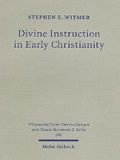
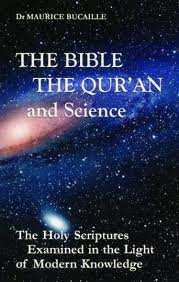
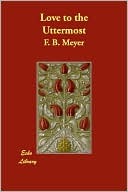
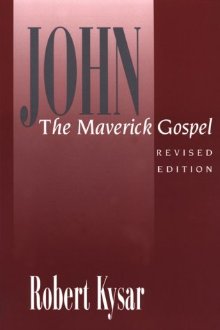
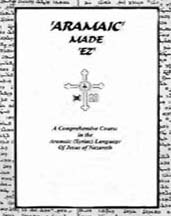

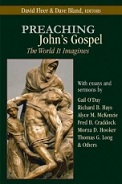

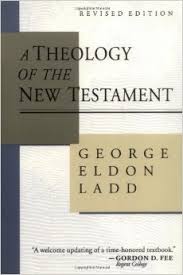
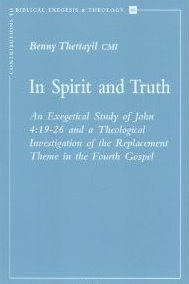


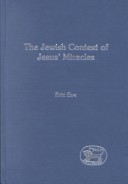
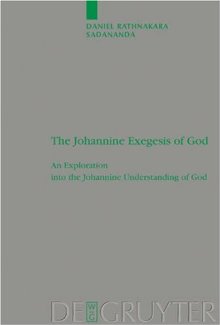

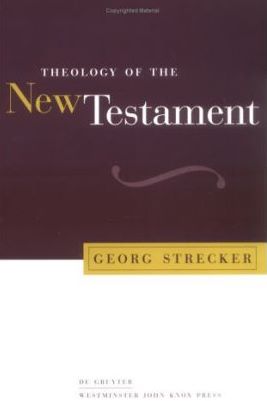

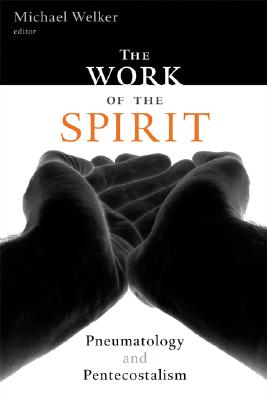
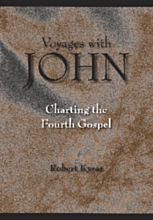


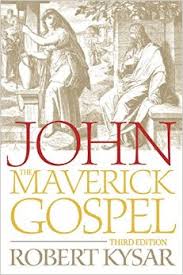
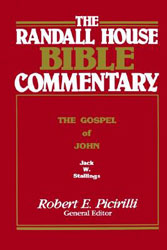
 “The teaching of the Paraclete, as the continuation of Jesus' teaching, must also be understood as the fulfillment of the promise of eschatological divine instruction.”
“The teaching of the Paraclete, as the continuation of Jesus' teaching, must also be understood as the fulfillment of the promise of eschatological divine instruction.”Stephen E. Witmer, Divine instruction in Early Christianity
“Jesus therefore predicts that God will later send a human being to Earth to take up the role defined by John .i.e. to be a prophet who hears God's words and repeats his message to man.”
M. Bucaille, The Bible, the Qur'n, and Science
“And when Jesus foreannounced another Comforter, He must have intended a Person as distinct and helpful as He had been.”
F. B. Meyer, Love to the Utmost
“The Paraclete has a twofold function: to communicate Christ to believers and, to put the world on trial.”
Robert Kysar, John The Meverick Gospel
“But She—the Spirit, the Paraclete...—will teach you everything.”
Danny Mahar, Aramaic Made EZ)
“Grammatical nonsense but evidence of the theological desire to defeminize the Divine.”
Lucy Reid, She Changes Everything
“The functions of the Paraclete spelled out in verses 13-15... are all acts of open and bold speaking in the highest degree.”
David Fleer, Preaching John's Gospel
“The reaction of the world to the Paraclete will be much the same as the world's reaction was to Jesus.”
Berard L. Marthaler, The Creed: The Apostolic Faith in Contemporary Theology
Bultmann calls the “coming of the Redeemer an 'eschatological event,' 'the turning-point of the ages.”
G. Ladd, A Theology of the New Testament
“The Paraclete equated with the Holy Spirit, is the only mediator of the word of the exalted Christ.”
Benny Thettayil, In Spirit and Truth
“The divine Paraclete, and no lessor agency, must show the world how wrong it was about him who was in the right.”
Daniel B. Stevick , Jesus and His Own: A Commentary on John 13-17
Stephen Smalley asserts that “The Spirit-Paraclete ... in John's Gospel is understood as personal, indeed, as a person.”
Marianne Thompson, The God of the Gospel of John
“The Messiah will come and the great age of salvation will dawn (for the pious).”
Eric Eve, The Jewish context of Jesus' Miracles
“The remembrance is to relive and re-enact the Christ event, to bring about new eschatological decision in time and space.”
Daniel Rathnakara Sadananda, The Johannine Exegesis of God
“The Spirit acts in such an international situation as the revealer of 'judgment' on the powers that rule the world.”
Michael Welker, God the Spirit
The Paraclete's “Appearance means that sin, righteousness, and judgment will be revealed.”
Georg Strecker, Theology of the New Testament
“While the Spirit-Paraclete is the true broker, the brokers they rely on are impostors.”
T. G. Brown, Spirit in the writings of John
“The pneumatological activity ... of the Paraclete ... may most helpfully be considered in terms of the salvific working of the hidden Spirit.”
Michael Welker, The work of the Spirit
“The pneuma is the peculiar power by which the word becomes the words of eternal life.”
Robert Kysar, Voyages with John
“The gift of peace, therefore, is intimately associated with the gift of the Spirit-Paraclete.”
Francis J. Moloney, The Gospel of John
“This utopian hope, even when modestly expressed, links Jesus and the prophets to a much wider history of human longing.”
Harvey Cox, The Future of Faith
“Because of the presence of the Paraclete in the life of the believer, the blessings of the end-times—the eschaton—are already present.”
Robert Kysar, John
“They are going, by the Holy Spirit's power, to be part of the greatest miracle of all, bringing men to salvation.”
R. Picirilli, The Randall House Bible Commentary
“The Kingdom of God stands as a comprehensive term for all that the messianic salvation included... is something to be sought here and now (Mt. 6:33) and to be received as children receive a gift (Mk. 10:15 = Lk. 18:16-17).”
G. Ladd, A Theology of the New Testament
Disclaimer: Our material may be copied, printed and distributed by referring to this site. This site also contains copyrighted material the use of which has not always been specifically authorized by the copyright owner. We are making such material available to our readers under the education and research provisions of "fair use" in an effort to advance freedom of inquiry for a better understanding of religious, spiritual and inter-faith issues. The material on this site is distributed without profit. If you wish to use copyrighted material for purposes other than “fair use” you must request permission from the copyright owner.